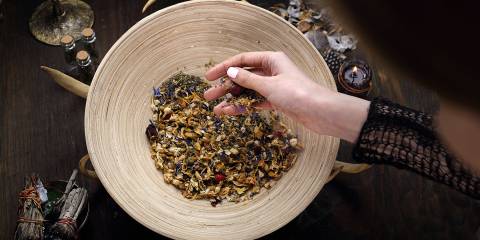Caroline MacDougall had been working in the herbal industry for almost 20 years, developing tea blends for companies like The Republic of Tea, when she had a dream in 1993 that changed her life.
In the middle of the dream, she heard herself say, “The next product I’m going to create is a caffeine free cappuccino. And the name of the product is Teeccino.” It startled her awake.
“Literally after I woke up, I started thinking about what herbs I should roast and grind,” MacDougall recalled. She knew she had a good idea, one she didn’t want to hand to another company. After all, the world had plenty of herbal tea blends, but what it didn’t have yet was a beverage that would brew and taste like coffee but without its acidity and caffeine.
By 1995, Teeccino caffeine-free herbal coffee was being carried in natural and specialty food stores across the country. Within a decade, it became the number one coffee alternative in the country.
Ahead of Her Time
Committed to rainforest preservation since her work with tea companies in the early 1990s, MacDougall came full circle when she launched Teeccino Organic Maya Blends in 2005. The drinks use wild-harvested ramón seeds, which come from upper canopy trees in Guatamala’s Maya Biosphere Reserve.
Gathered from the forest floor, the ramón seeds—originally drunk as a roasted beverage by the Maya—give indigenous rainforest communities a market that provides economic value to standing trees.
Because the ramón tree is wind pollinated, its seeds spread naturally. Additionally, Teeccino is funding the planting and care of seedlings in the degraded buffer areas around the reserve that have been illegally logged, burned, or used as pasture land. The hope is that the trees repopulate the area and species that live beneath the canopy will return.
Rewilding The Maya Biosphere Reserve
“We didn’t call it rewilding back then,” MacDougall said, referring to conservation efforts focused on restoring sustainable biodiversity and ecosystem health through the protection of wilderness areas.
The term “rewilding” didn’t appear in dictionaries until 2011. “The Maya Biosphere Reserve is the largest intact forest in all of Central America. But otherwise, you find remnant forest patches. My initial idea, which is now called rewilding, is to have corridors that would connect these remnant forest patches so that animals and other species could migrate from one to the other.”
Teeccino now works with Wild.org, an international organization responsible for starting Global Rewilding Day, held on March 20. Learn more about Teeccino's impact.




